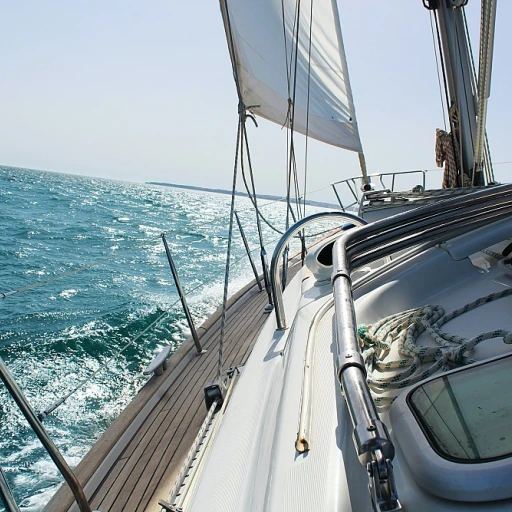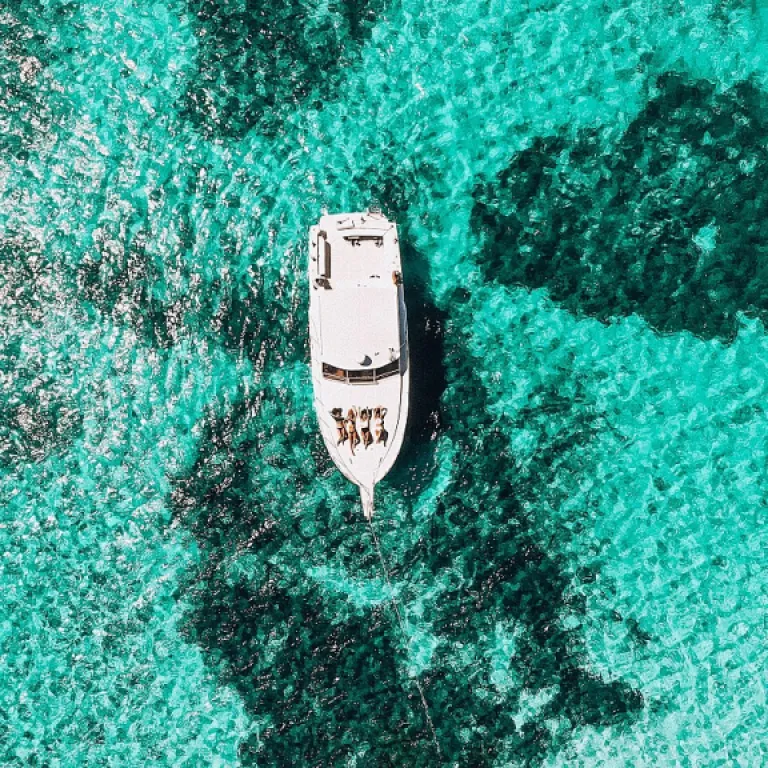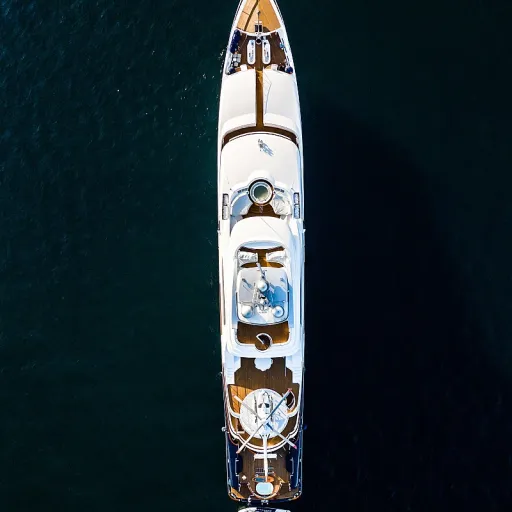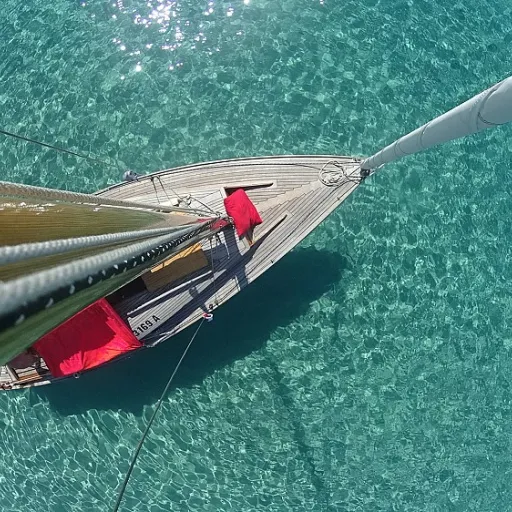
Understanding dyneema heat shrink tubing in yachting
What Sets Dyneema Heat Shrink Tubing Apart in Yachting?
In the yacht industry, the demand for advanced materials is always growing. Dyneema heat shrink tubing stands out as a game-changer for both performance and safety on board. Unlike traditional polyester or black heat shrink sleeves, Dyneema offers a unique combination of strength, flexibility, and lightweight protection. This tubing is engineered to cover and protect critical rope, strand, and splice areas, especially where abrasion or UV exposure is a concern.
When you buy Dyneema heat shrink tubing, you’re investing in a product that’s designed to withstand the harsh marine environment. It resists saltwater, heat, and mechanical wear better than many alternatives. Whether you’re covering a climbing rope, securing an eye splice, or reinforcing a member post, Dyneema shrink tubing delivers reliability where it matters most.
- Material: Dyneema fibers are known for their high tensile strength, making them ideal for rope heat protection and critical joins.
- Application: The tubing shrinks tightly over rope or cable using a heat gun or even boiling water, forming a durable sleeve or cover.
- Color Options: Available in black, red, and other colors to match your boat’s aesthetic or for easy identification of lines.
Yacht owners and crew often use Dyneema shrink wrap or tape to reinforce electrical tape joins, protect log register posts, or secure thread starter ends. The versatility of this tubing means it’s found in many locations on board, from the deck to the engine room. For those interested in the technical details of rope construction and how Dyneema bury techniques can affect rope length, this guide on Dyneema bury and rope shortening offers further insights.
Understanding the basics of Dyneema heat shrink tubing is the first step. In the next sections, we’ll explore its key advantages, common uses, and best practices for installation and maintenance, helping you get the most from this innovative solution on your yacht.
Key advantages for yacht applications
Why Dyneema Heat Shrink Tubing Stands Out
When it comes to boosting both performance and safety on a yacht, Dyneema heat shrink tubing brings a unique set of advantages that set it apart from traditional polyester or black heat shrink options. Its high strength-to-weight ratio and resistance to abrasion make it a top choice for demanding marine environments. Whether you are looking to cover a rope eye splice, join strands, or protect a climbing rope, this tubing delivers reliable results.
- Superior Durability: Dyneema’s molecular structure means it resists wear and tear from constant movement, UV exposure, and saltwater. This is crucial for any boat member handling lines or posts in harsh conditions.
- Enhanced Safety: The snug fit of shrink tubing, especially when applied with a heat gun or boiling water, reduces snagging and fraying. This minimizes the risk of accidents, whether you’re working with a sleeve, tape, or shrink wrap on deck.
- Lightweight Yet Strong: Unlike heavier covers or electrical tape, Dyneema shrink tube adds minimal weight but offers robust protection. This is key for performance, especially on racing yachts where every gram counts.
- Corrosion and Chemical Resistance: The material doesn’t degrade like polyester or black alternatives, making it ideal for long-term use in marine locations such as Deale or other coastal areas.
- Easy to Apply: Whether you buy shrink tubing in red, black, or other colors, the process is straightforward. Just apply heat and the tube conforms tightly to the rope or strand, creating a seamless cover.
For yacht enthusiasts interested in maximizing propulsion and maneuverability, exploring the benefits of aqua thrusters can complement the performance gains achieved with Dyneema heat shrink tubing.
From log register posts to thread starter guides, the marine community continues to share link after link about the reliability of Dyneema solutions. Whether you’re outfitting a new boat or upgrading existing lines, choosing the right shrink heat product will make a noticeable difference in both safety and longevity on the water.
Common uses on board
Practical Applications On Board
Dyneema heat shrink tubing has become a staple for yacht owners and crew looking to enhance both performance and safety. Its versatility means you’ll find it in several critical locations across a boat, from the rigging to the electrical systems.- Protecting Rope and Splice Joints: When you create an eye splice or join two strands, covering the connection with shrink tubing helps prevent chafing and moisture ingress. This is especially important for high-load lines like halyards and sheets, where a secure cover can extend the life of expensive Dyneema or polyester rope.
- Securing and Marking Lines: Black heat shrink or colored tubing (like red or black) is often used to color-code lines, making it easier for crew members to identify the right rope quickly. It’s also common to use shrink wrap or tape to tidy up the ends of climbing rope or dock lines, preventing fraying and keeping the deck organized.
- Electrical Insulation: Onboard electrical systems benefit from heat shrink tubing as a reliable insulator. It’s used to cover exposed connections, posts, and terminals, reducing the risk of corrosion and short circuits—especially in the harsh marine environment.
- Chafe Protection: Tubing acts as a sleeve or cover for areas where lines run through blocks or over rails. This reduces wear on both the rope and the boat’s fittings, especially in high-friction spots.
- Custom Applications: Some yacht enthusiasts use shrink tube to reinforce the ends of sail ties, secure electrical tape, or even as a quick fix for minor repairs. Boiling water or a heat gun can be used to shrink the tubing, depending on the location and material.
Installation tips and best practices
Preparing for a Secure and Lasting Application
Proper installation of Dyneema heat shrink tubing is essential for maximizing both performance and safety on your boat. Whether you are covering a climbing rope, reinforcing an eye splice, or protecting a polyester strand, the right approach ensures the tubing delivers its full benefits. Here are some practical tips and best practices for yacht owners and crew members:
- Choose the Right Size and Color: Measure the diameter of the rope, tape, or cable you plan to cover. Dyneema shrink tubing comes in various sizes and colors, such as black or red, to match your yacht’s needs and aesthetics. Always buy tubing that will fit snugly after shrinking.
- Prepare the Surface: Clean the rope, sleeve, or post thoroughly. Remove any old electrical tape, dirt, or salt residue. A clean surface helps the shrink tube adhere better and last longer, especially in marine environments.
- Cut to Length: Use sharp scissors or a blade to cut the tubing to the required length. Allow for a little extra to ensure full coverage over joins or eyes.
- Position Carefully: Slide the shrink tube over the area to be protected. For eye splices or rope heat joins, center the tubing for even coverage.
- Apply Heat Evenly: Use a heat gun for best results. Move the heat source back and forth to avoid overheating one spot. If a heat gun is not available, boiling water can sometimes be used for smaller applications, but it may not provide as tight a fit as direct heat.
- Check for Gaps: After shrinking, inspect the tubing for any gaps or air pockets. A well-applied shrink wrap should be smooth and tight against the underlying material.
- Secure the Ends: For extra durability, consider sealing the ends with a small amount of electrical tape or a dab of marine-grade adhesive, especially in high-wear locations like deck posts or log register mounts.
Remember, the longevity of your Dyneema heat shrink tubing depends on careful installation and regular inspection. Whether you’re a new member of the yachting community or a seasoned sailor, following these steps will help you get the most from your investment and keep your boat’s rigging and electrical systems protected.
Maintenance and longevity in marine environments
Protecting Dyneema Heat Shrink Tubing for Long-Term Performance
Maintaining the integrity of dyneema heat shrink tubing on your boat is essential for both safety and performance. The marine environment is harsh, with constant exposure to saltwater, UV rays, and temperature fluctuations. Here’s how you can ensure your heat shrink tubing, whether black or red, continues to protect your rope, eye splices, and electrical connections over time.- Regular Inspection: Make it a habit to check all shrink tubing covers, especially at connection points and around rope heat splices. Look for signs of wear, abrasion, or discoloration. Pay close attention to areas where the tubing covers climbing rope, polyester strand, or electrical tape joins.
- Cleaning: Salt and grime can degrade both dyneema and polyester shrink sleeves. Rinse with fresh water after each voyage, especially if you sail in saltwater locations like Deale. Avoid harsh chemicals that might weaken the tubing or underlying rope.
- UV Protection: While black heat shrink tubing offers some UV resistance, prolonged sun exposure can still cause brittleness. Consider using additional covers or tape in high-exposure areas, and store spare tubing and rope out of direct sunlight when not in use.
- Proper Reapplication: If you notice any loose or damaged shrink wrap, replace it promptly. Use a heat gun or, in some cases, boiling water to ensure a tight, secure fit when reapplying. Always overlap the tubing slightly over the rope or eye splice for maximum protection.
- Log and Register Maintenance: Keep a log register of when and where you install or replace shrink tube on your boat. This helps track the longevity of each application and makes it easier to identify patterns of wear in specific locations or posts on board.
Extending the Life of Your Tubing Investment
Dyneema heat shrink tubing is a premium solution, so it’s worth taking steps to maximize its lifespan. Here are a few extra tips:- Buy quality tubing from reputable suppliers to ensure consistent performance.
- When joining rope or creating an eye splice, use electrical tape or thread starter to secure the strands before applying the shrink tube. This prevents slippage and ensures a neat finish.
- For high-stress areas, consider double-sleeving with both dyneema and polyester covers for added durability.
- Share link to maintenance routines or best practices on forums like delmarva blogspot or sail delmarva to stay updated with community insights.
Comparing dyneema heat shrink tubing to other solutions
How Dyneema Heat Shrink Tubing Stacks Up Against Alternatives
When considering upgrades for your yacht, the choice between Dyneema heat shrink tubing and other solutions like polyester sleeve, electrical tape, or traditional shrink wrap is important. Each option brings its own set of benefits and limitations, especially in demanding marine environments.- Durability and Strength: Dyneema stands out for its high strength-to-weight ratio. Compared to polyester or standard black heat shrink tubing, Dyneema resists abrasion and UV damage far better. This makes it ideal for rope protection, eye splice reinforcement, and covering climbing rope or member strand connections exposed to saltwater and sun.
- Ease of Application: Using a heat gun or boiling water, Dyneema shrink tube conforms tightly around rope or cable, creating a secure seal. Polyester sleeve and electrical tape may require more effort to apply evenly and can unravel or degrade over time, especially in high-motion areas like a boat’s posts or log register points.
- Longevity in Marine Conditions: Dyneema’s resistance to moisture, salt, and temperature swings means less frequent replacement compared to black heat shrink or standard shrink wrap. This is especially valuable for locations like Deale or other coastal areas where boats face harsh weather.
- Versatility: Dyneema heat shrink tubing adapts to various uses—covering rope heat splices, joining eye splices, or reinforcing tape-wrapped ends. While polyester and electrical tape are useful for quick fixes, they lack the robust protection Dyneema offers for long-term safety and performance.
| Solution | Strength | UV/Weather Resistance | Application | Best Use |
|---|---|---|---|---|
| Dyneema Heat Shrink Tubing | High | Excellent | Heat gun/boiling water | Rope, eye splice, sleeve cover |
| Polyester Sleeve | Medium | Good | Manual fit | General rope protection |
| Electrical Tape | Low | Poor | Manual wrap | Temporary fixes |
| Shrink Wrap | Medium | Fair | Heat gun | Wire insulation |













